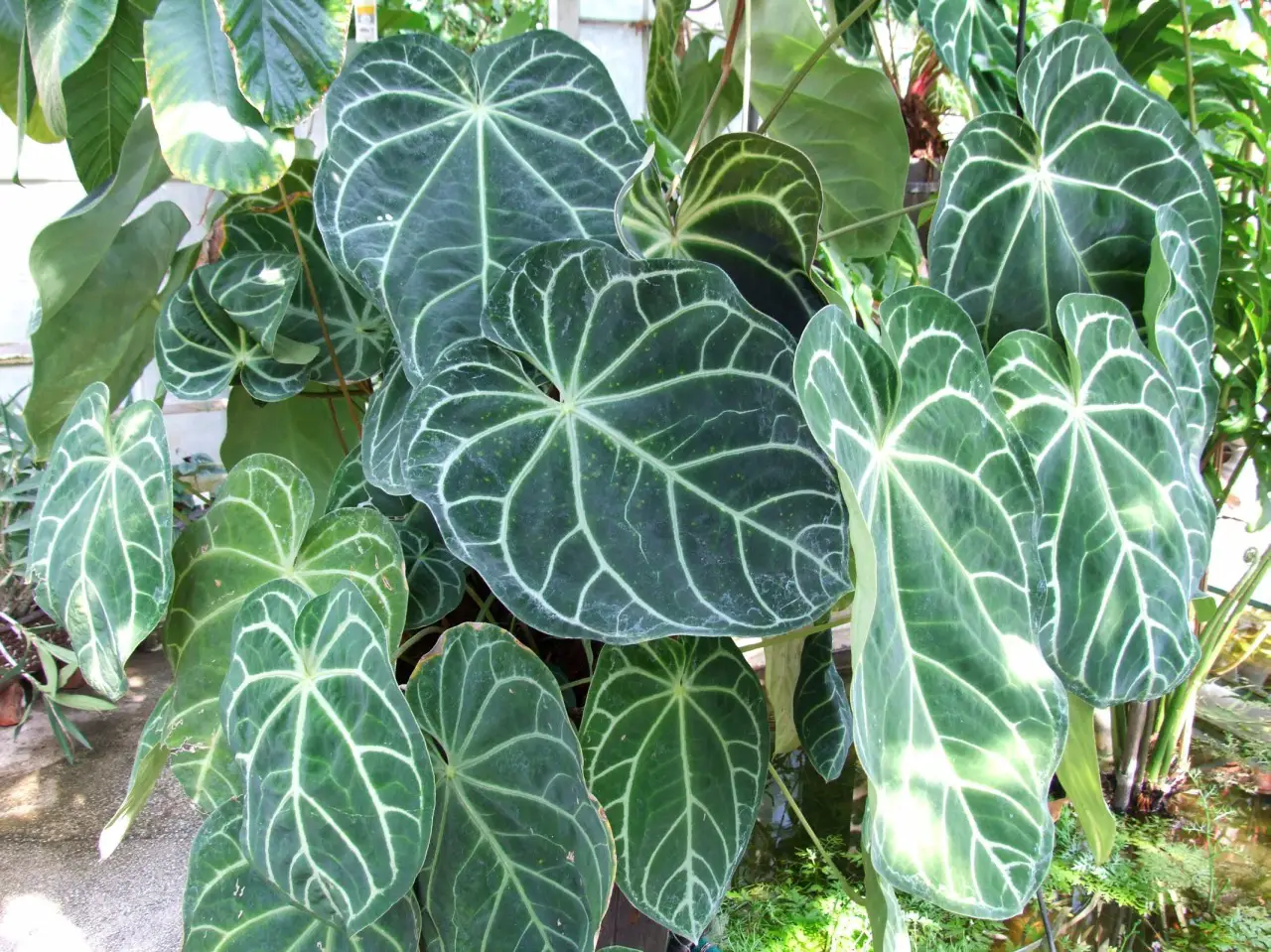Anthurium Magnificum, an alluring tropical perennial plant, is renowned for its dramatic green, velvety leaves. Native to the rainforests of Colombia, this exotic plant belongs to the vast Araceae family, which contains over 1,000 different species. The leaves of Anthurium Magnificum, sometimes reaching over two feet in length, are characterized by striking silver veins, making them a showstopper in any collection.
Thriving in humid, warm climates, Anthurium Magnificum requires specific care, including the right balance of light, moisture, and soil. It’s not just a visually stunning plant, though; it’s also associated with a rich tradition in various cultures and has been a subject of interest for botanists and horticulture enthusiasts alike.
Anthurium Magnificum is a houseplant that requires a level of care and attention akin to that of its natural rainforest habitat. Its needs might seem a bit complex at first, but with the proper knowledge and understanding, caring for this extraordinary plant can be an immensely rewarding experience.
| Attribute | Details |
|---|---|
| Common Names | Anthurium Magnificum |
| Botanical Name | Anthurium magnificum |
| Family | Araceae |
| Plant Type | Tropical Perennial |
| Mature Size | Up to 2 feet in height, leaves 2 feet in length |
| Sun Exposure | Indirect, bright light |
| Soil Type | Well-draining, peat-based mix |
| Hardiness Zones | 11-12 |
| Native Area | Colombia |
Anthurium Magnificum Care
Caring for Anthurium Magnificum is a rewarding experience for those willing to provide the right environment. Its rainforest origins mean that humidity, warmth, and consistent care are vital. When properly attended to, Anthurium Magnificum will display its large, impressive leaves, adorned with intricate venation.
Watering, light management, and choosing the correct soil are critical for its growth. Its sensitive nature also means that protection from pests and diseases is essential, and a regular inspection routine will keep the plant looking its best.
Light Requirement for Anthurium Magnificum
Anthurium Magnificum prefers bright, indirect light. Harsh direct sunlight can cause leaf burn, while too little light can lead to leggy growth and diminished color in the leaves. A north or east-facing window, perhaps filtered through sheer curtains, is often ideal.
Soil Requirements for Anthurium Magnificum
Well-draining soil that retains some moisture is key for this plant. A mix containing peat, perlite, and pine bark in equal parts usually works well. The soil should allow air to reach the roots but also retain enough water to keep them hydrated.
Water Requirements for Anthurium Magnificum
Watering should be consistent but not excessive. The soil should be kept lightly moist but never soggy. Letting the top inch of soil dry out between waterings is a good rule of thumb. Overwatering can lead to root rot, a common issue with this plant.
Temperature and Humidity
Anthurium Magnificum thrives in temperatures between 65-80°F (18-27°C) and requires high humidity, ideally above 60%. A humidity tray or room humidifier can help maintain this level, particularly during the dry winter months.
Fertilizer
Fertilizing every 6-8 weeks during the growing season with a balanced liquid fertilizer, diluted to half the recommended strength, will support healthy growth. Avoid over-fertilizing, as this can lead to salt buildup in the soil.
Pruning Anthurium Magnificum
Pruning is minimal but can be performed to remove dead or yellowing leaves. This not only improves appearance but also allows more energy to be directed towards healthy growth.
Propagating Anthurium Magnificum
Propagation can be achieved through division during repotting. Carefully separating a section of the plant with roots attached and planting it in a similar soil mix can create a new plant.
How To Grow Anthurium Magnificum From Seed
Growing from seed is rare and challenging, often left to experts. If attempting, seeds must be fresh and sown in a well-draining medium, kept humid, and at a consistent temperature of around 75°F (24°C).
Common Pests & Plant Diseases
Spider Mites
Affecting plants in dry conditions, spider mites can be treated with insecticidal soap.
Root Rot
Often caused by overwatering, root rot can be avoided with proper watering and well-draining soil.
Common Problems With Anthurium Magnificum
Yellowing Leaves
This often indicates overwatering. Adjust watering practices and ensure soil is well-draining.
Leggy Growth
This can be a sign of insufficient light. Move the plant to a brighter location but avoid direct sunlight.
Pro Tips
- Maintain high humidity, using a room humidifier if necessary.
- Avoid direct sunlight to prevent leaf burn.
- Water consistently but avoid waterlogged soil.
- Use a well-draining, peat-based soil mix.
- Regularly inspect for pests and diseases.

